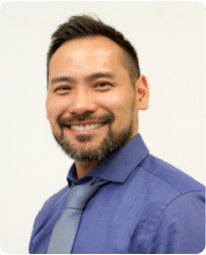Building materials and products, such as asbestos, lead-based paints, PCBs, halocarbons, mercury etc. can be found in many existing buildings, and especially those constructed before 1990. WorkSafeBC considers these, and other materials to be “hazardous,” and proper steps must be undertaken to ensure unprotected workers and occupants or tenants are not unduly exposed to these health hazards/risks during maintenance, repair, renovation or demolition activities.
Does your building or workplace contain (or potentially contains) these types of hazardous materials (“HazMats”)? Do you understand the types of risks and consequences that could occur, such as:
Do you understand your regulatory duties to properly identify, through a “Qualified Person,” these materials and know how to manage these risks to minimize your liabilities and maintain your due diligence?
WorkSafeBC has defined who is a “Qualified Person” regarding the proper assessment and management of HazMats. These professionals are required to have education, training, knowledge and experience in the management and control of HazMats.
WorkSafeBC is currently focusing several enforcement efforts on “so-called” qualified individuals, and have been administering penalties on those consultants who have not proven that they have a high degree and level of education, training, knowledge or experience in HazMats.
At OHS Global, we have certified professionals (e.g. AHERA® Certified Building Inspectors) who have a high level of project/work experience in assisting our clients in properly controlling and managing their HazMat risks. We focus on learning and understanding your specific business operations, to be able to effectively identify and assess your risks, the potential impacts on your workers and/or occupants, and to design practical mitigation strategies to manage those risks in a cost-efficient, responsive and professional manner.
Our services include, but are not limited to:
Under Part 3, Division 3, Section 119 of the Workers Compensation Act, Owners are required to give to Employers or Contractors who work on their premises critical health and safety information (known to the Owner) that is required to identify and eliminate or control hazards to persons at that workplace.
This means that Owners are required by the legislation to at least identify those HazMats (through a comprehensive survey) and provide that information (i.e. report, inventory) to anyone work may perform work at their place of business and who may potentially impact those materials.
Employers responsible for demolition, renovation or salvage of machinery, equipment, a building or a structure must ensure that an appropriately Qualified Person inspects for HazMats that may be associated with those items. If suspect or known materials are found, then the Qualified Person must undertake important actions, including, but not limited to: collecting representative samples, determining if samples are hazardous (or not), identifying material locations, and making a written report detailing all findings.
There are several more key steps that must be undertaken by not just a Qualified Person, but also you, as the responsible Owner or Employer. These actions include, but are not limited to:
Once the HazMats have been safely contained or removed, a Qualified Person must confirm, in writing, that those materials have indeed been properly contained or abated. This report must be provided to an assigned WorkSafeBC Officer upon their request.
OHS Global is here to help! We are an industry leader in the provision of professional, quality, timely and practical hazardous materials consulting and training services. We have nearly 50 combined years of experience in assisting thousands of clients from various industry sectors in identifying their HazMat risks, and designing effective strategies and solutions to manage those risks. Contact us for further information about how we can help you meet and overcome your specific HazMat challenges.

Craig Yee is an Industrial Hygienist and Principal of OHS Global Risk Solutions. He earned his Masters Degree in Occupational and Environmental Hygiene at the University of British Columbia. He has over 12 years of direct experience in the hygiene, health and safety industry in both public and private sectors. You can connect with him on Google+.

Risk Identified. Risk Managed.